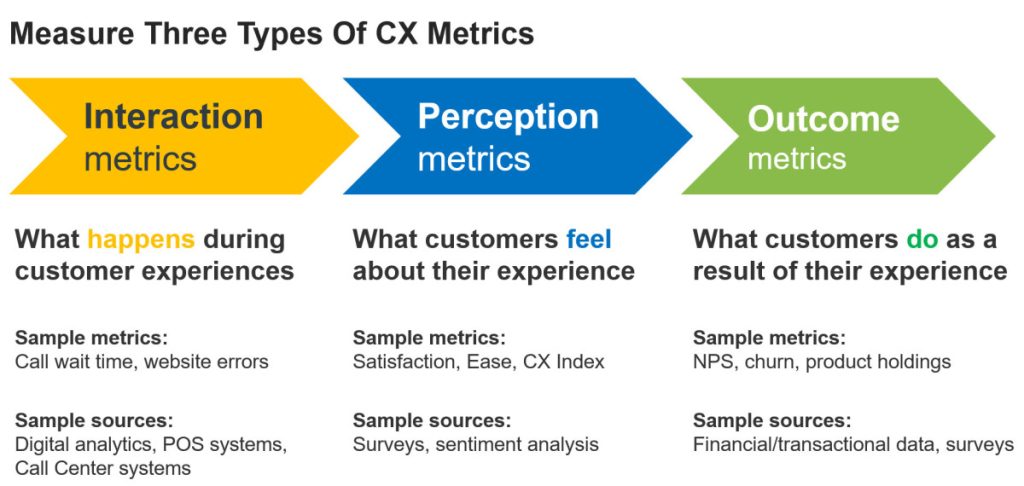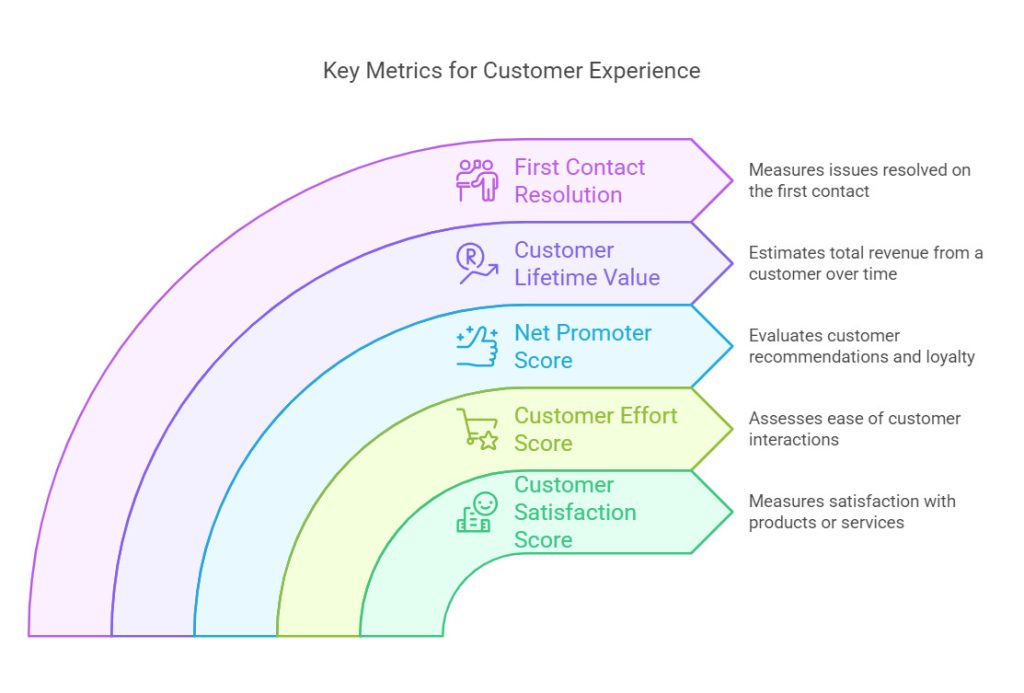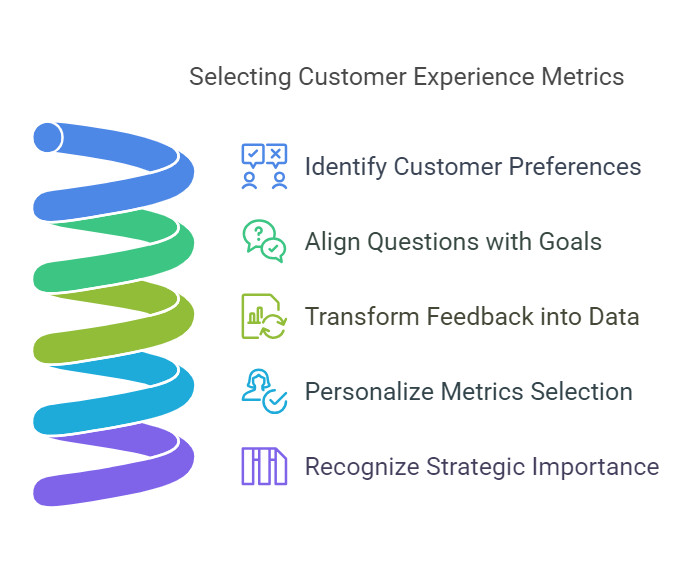- Research platform
Sources of information
Data analysis
Actions
- Solutions
For whom
Problems / Issues
- Materials
Materials
- About us
About us

In today's market, understanding customer experience metrics is crucial for businesses that want to boost In today’s market, understanding the right customer experience metric is crucial for businesses that want to boost customer satisfaction and loyalty. With various choices available, picking the right customer experience metrics can be difficult. This guide aims to help you select the most effective CX metrics for your needs.
You will discover the basics of customer experience metrics and review common metrics that top companies monitor. Learn the significance of having a strong measurement framework. We will also discuss ways to convert the data you collect into useful insights that informs decisions. By the time you finish this, you will have a clear path on how to measure and improve your customer experience, so you can stay competitive and meet customer demands.
Customer experience metrics help quantify customer perceptions toward their interactions with a brand. These metrics help businesses understand how customers perceive their interactions with the brand. Using these metrics, businesses gain valuable insights into many aspects of the customer journey. This can help to assess and enhance overall customer experience.
Metrics divide into operational and emotional categories. Operational metrics focus on efficiency, such as support resolution times. Emotional metrics gauge sentiments and feelings. Net Promoter Score (NPS) is a common cx metric. It captures how likely customers are to recommend a brand, reflecting satisfaction.
Tracking customer experience metrics helps organizations identify friction points along the journey. Improving these areas enhances customer satisfaction. Measuring these metrics directly correlates with better customer retention and increased lifetime value.
In optimizing strategies for customer experiences, businesses rely on metrics to make informed choices. These choices align with what customers need and expect. In the next section, we will explore common customer experience metrics that organizations should track. This will help them measure performance in delivering great experiences.
Tracking customer experience metrics is essential for businesses to understand their customers’ needs, preferences, and pain points. By measuring customer experience, companies can identify areas for improvement, optimize their products and services, and ultimately drive business growth. Customer experience metrics provide valuable insights into customer satisfaction, loyalty, and retention, which are critical for building a loyal customer base and increasing revenue. Moreover, tracking customer experience metrics helps businesses to stay competitive in the market, as customers are more likely to choose companies that offer exceptional experiences.

Evaluating and improving customer experience requires businesses to focus on key customer experience metrics. Each metric offers vital insights into customer behavior and sentiment. These metrics serve as key performance indicators that help businesses evaluate the quality of their customer interactions. The following are the key metrics to track.
The Customer Satisfaction Score measures satisfaction about a product or service. Typically gathered through surveys, customers rate their satisfaction on a scale. Higher CSAT scores indicate effective customer expectations fulfillment.
Customer Effort Score gauges how easy it is for customers to interact with a company. This metric asks customers to rate their experiences in terms of difficulty during problem resolutions. Lower CES means easier engagements with the brand, boosting loyalty.
Net Promoter Score assesses customer recommendations. It categorizes respondents into promoters, passives, and detractors. This metric helps determine loyalty and project business growth. A higher NPS signals stronger brand affinity among customers.
Aside from these crucial metrics, businesses should consider Customer Lifetime Value, which estimates total revenue a customer contributes to the company over time. First Contact Resolution measures the portion of customer issues addressed during the first contact. Every metric contributes vital insights into customer experience.
Monitoring these customer experience metrics helps businesses identify service strengths and weaknesses. This knowledge informs decisions to improve customer interactions. Understanding these metrics is next steps in assessing experience: Selecting the metrics that align with business goals.
These metrics reflect customer opinions. By focusing on important facets of satisfaction, organizations can determine what matters most to customers. This allows better alignment of services with customer expectations.
Using customer experience metrics, companies can gain insight into improvement areas. It’s important to create a framework for evaluation without complicating processes. Accurate data helps formulate actionable strategies and optimizes customer service delivery.
In conclusion, monitoring customer experience metrics is essential for business growth. Choosing the correct metrics and aligning them with business goals lead to informed decisions. Improved understanding of these metrics shapes better customer relations and builds loyalty.
Operational customer experience metrics focus on the efficiency and effectiveness of customer interactions with a company’s products or services. These metrics help businesses to evaluate the quality of their customer service, identify bottlenecks in their processes, and optimize their operations to improve customer satisfaction. By monitoring these metrics, companies can ensure that their customer service representatives are resolving issues promptly and effectively, leading to more satisfied customers and higher customer retention rates.

Choosing the right customer experience metrics is crucial for knowing how well your business meets customer needs. Choosing the right metrics is essential to accurately measure customer experience and make informed decisions. Here are steps that will help you find CX metrics fit for your business.
The choice of cx metrics should reflect unique characteristics of your customer base and your business aims. A personalized approach improves customer engagement and leads to better customer experiences overall.
Once you have the framework for selecting cx metrics, realizing their importance in your business strategy is vital. This understanding guides your metrics selection and enhances customer experience efforts.
In today’s market, understanding customer experience metrics is crucial for measuring the success of your initiatives. Metrics offer a way to view customer interactions. They help businesses make decisions that rely on data. Without proper metrics, improvement areas stay hidden.
Customer experience metrics respond directly to feedback from customers. By keeping an eye on these metrics, businesses understand customer perceptions better. This insight reveals trends and pain points that could stay unnoticed. Businesses can then enhance satisfaction and build loyalty. By understanding these metrics, businesses can enhance customer loyalty and reduce churn.
Studies show that those who prioritize customer experience metrics gain a competitive edge. Positive experiences can lead to a 10% rise in customer engagement levels. Implementing strong measurement methods correlates with higher profits. This highlights the value in understanding right cx metrics for growth.
In conclusion, customer experience metrics are not solely numbers; they are key in strategic decision-making. As companies aim to improve their customer journeys, insights from these metrics will shape future efforts, guide how resources are used, and enhance interactions with customers.
To move forward, it’s vital to set up an effective CX measurement framework. This will turn metrics into insights. Businesses can then respond to customer needs more adaptively.
Creating a strong CX metrics framework is crucial for companies wanting to enhance customer experience. To apply a successful framework, it's crucial to align customer experience metrics with overall business objectives. This ensures metrics reflect customer voice while aiding in strategic goals.
To grasp customer journey properly, feedback should be collected from all interaction touchpoints like websites, apps, or stores. Gathering insights from different channels can provide businesses with broader understanding of customer expectation and experience. For instance, using post-interaction surveys or customer satisfaction scores can help understand customer perceptions better.
Furthermore, aligning customer experience metrics with these interaction points improves customer satisfaction levels. When businesses focus on understanding and analyzing every customer touchpoint, it can aid in revealing key pain points and improvement areas. Effective frameworks often utilize balanced scorecards that include both qualitative and quantitative data, creating a well-rounded perspective.
In the end, implementing a CX metrics framework goes beyond just data collection; it cultivates a culture of ongoing improvement informed by customer insights. By responding to feedback and refining processes, organizations can change customer experiences into competitive benefits.
As we examine how to use the captured CX metrics, next steps include converting these insights into strategic actions driving real improvements in the customer experience. This transition is vital in improving overall business performance and customer satisfaction.
Surveys and feedback collection are essential tools for measuring customer experience. By collecting feedback from customers, businesses can gain insights into their strengths and weaknesses, identify areas for improvement, and make data-driven decisions to enhance their products and services. Surveys can be conducted through various channels, including email, social media, and in-app notifications. Feedback collection can also be done through customer support interactions, reviews, and ratings. This continuous feedback loop helps businesses stay attuned to customer sentiment and adapt their strategies to meet evolving customer expectations.
In today's world, using customer experience metrics effectively is vital. It helps organizations pinpoint areas that needs improvement. By properly monitoring cx metrics, businesses can respond to the changes in customer feeling swiftly.
Customer feedback play an important role in this process. Surveys, feedback forms, and interviews gives both qualitative and quantitative data. This information can spotlight pain points and aspects that customers appreciate. For example, a sudden fall in Net Promoter Score (NPS) indicates an urgent need for further investigation into factors damaging the experience.
Furthermore, communicating any changes based on cx metrics to customers is crucial. When customers see that their opinions leads to action, it builds loyalty. If a store notices complaints about long checkout lines, fixing this by opening new registers and informing customers is an effective way to enhance trust and image.
Statistics show that 73% of customers believe that a good experience influences their loyalty. Thus, responding to cx metrics becomes essential. Organizations should analyze these metrics and update their strategies based on the obtained insights. It keeps them in tune with their customer's changing expectations.
Transforming customer experience metrics into actionable strategies lets companies integrate technology into their measurement processes. Advanced analytics and customer relationship tools can improve the tracking of customer interactions. This creates a beneficial feedback cycle that enhances the overall journey customers experience over time.
Today, technology shapes understanding and improving customer experience metrics. Advanced tools like customer journey analytics let businesses explore consumer behavior deeply. They learn not just actions but also the reasons behind them. Mapping the customer journey highlights key touchpoints which affect customer satisfaction and loyalty.
Also, artificial intelligence (AI) can change how companies analyze cx metrics. AI supports real-time data analysis, helping businesses monitor customer interactions as they happen. Predictive analytics can show trends for future interactions. With such insights, companies personalize experiences that resonate with their customers, thus increasing engagement and retention.
For example, businesses apply machine learning to segment customers based on behaviors and preferences. This enables targeted marketing strategies and communication. Using this method of measuring customer experience enhances engagement and boosts overall operational efficiency. Resources get allocated more effectively because of this intelligent approach to experience metrics.
The integration of these technologies streamlines measurement and gives companies actionable insights. This shift means businesses can go beyond merely gathering data, focusing more on understanding customer needs. Consequently, organizations can adjust their strategies in real-time. They can meet or improve upon customer expectations at every point of the journey.
In a nutshell, tracking customer experience metrics is crucial. Organizations must leverage technology for a complete view of customer interactions. Data gathered can inform better decision-making on how to improve services and products that connect with customers well. Companies that understand their customer journeys can build loyalty and sustain successful operations.
This guide examined the key role of customer experience metrics. Understanding cx metrics is important to improve your business success. Knowing common metrics to track like Net Promoter Score and Customer Satisfaction Score can help you evaluate customer perceptions effectively.
It is essential to tailor the right metrics to match your specific business needs. We highlight the significance of having a solid CX measurement framework. Now it's time for action! Assess your existing measurement methods now and think of integrating new customer experience metrics.
Align these metrics with your strategic goals. Transforming insights into plans will enhance customer satisfaction and loyalty. Remember, optimizing customer experience is a continuous journey. Using accurate cx metrics helps in making decisions focused on your customers. Implement these practices to create a positive customer experience that resonates.
CX dashboards are powerful tools that help businesses to visualize and analyze customer experience data in real-time. These dashboards provide a centralized platform for tracking key customer experience metrics, such as customer satisfaction, net promoter score, and customer effort score. By using CX dashboards, businesses can quickly identify trends and patterns in their customer experience data, make data-driven decisions, and optimize their operations to improve customer satisfaction and loyalty. Additionally, CX dashboards enable businesses to monitor their customer experience performance over time, set benchmarks, and track the effectiveness of their customer experience initiatives. This real-time visibility into customer interactions allows companies to be proactive in addressing issues and enhancing the overall customer journey.
This guide examined the key role of customer experience metrics. Understanding cx metrics is important to improve your business success. Knowing common metrics to track like Net Promoter Score and Customer Satisfaction Score can help you evaluate customer perceptions effectively.
It is essential to tailor the right metrics to match your specific business needs. We highlight the significance of having a solid CX measurement framework. Now it's time for action! Assess your existing measurement methods now and think of integrating new customer experience metrics.
Align these metrics with your strategic goals. Transforming insights into plans will enhance customer satisfaction and loyalty. Remember, optimizing customer experience is a continuous journey. Using accurate cx metrics helps in making decisions focused on your customers. Implement these practices to create a positive customer experience that resonates.
Copyright © 2023. YourCX. All rights reserved — Design by Proformat